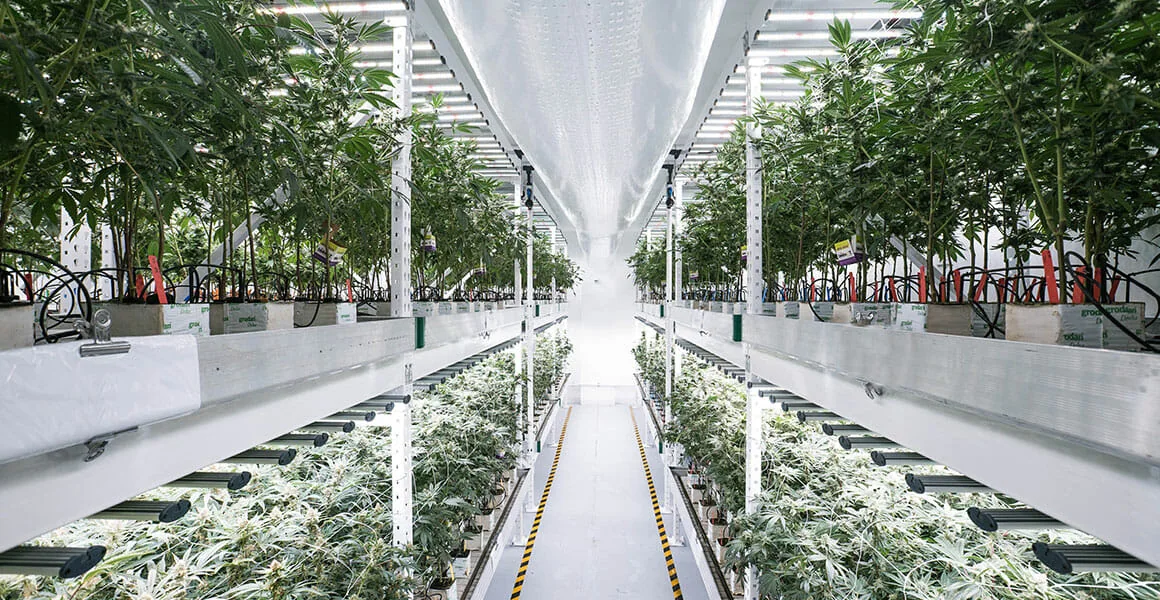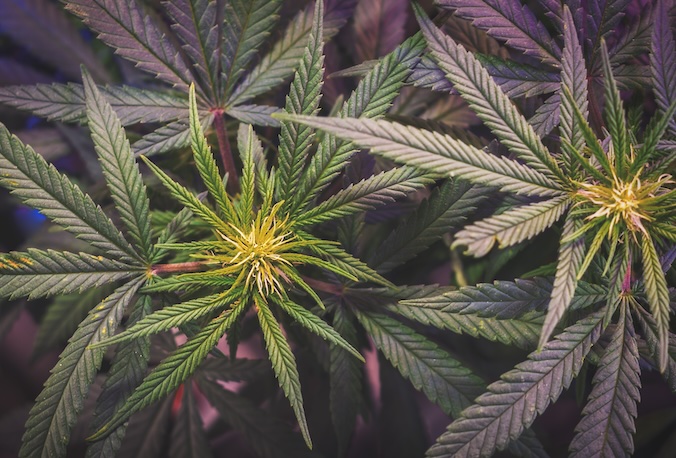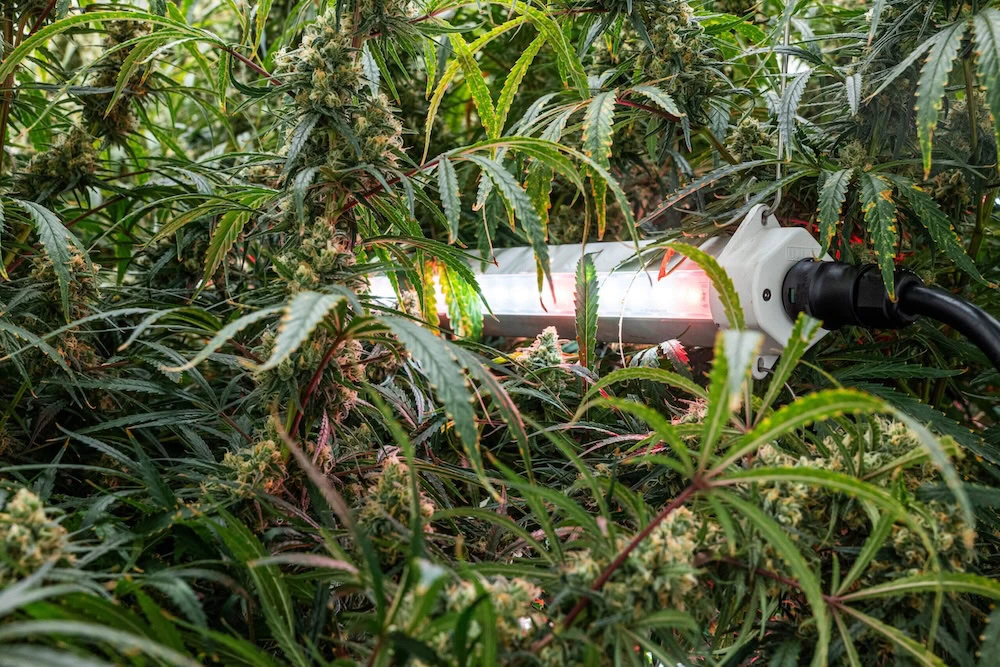The ROI for LEDs relies on a variety of critical factors such as location and climate, the type of crops grown, environmental conditions, facility design and much more.
A manufacturer can help you navigate the complexity of financial returns and estimate the ROI of an LED retrofit, but it’s smart to dive into some of these factors yourself before consulting an expert.
If you’re interested in discovering potential capital expenses, payback period, production increases as a function of revenue performance and other top-line metrics, here are four vital determinants when calculating ROI to choose the best lighting system.
1. Crop value: LEDs can generate more revenue
Because 20 percent efficiency gains are typical with LEDs, many cultivators are excited by their lower energy use once they have retrofitted their facility
But cultivators might be surprised to learn that the biggest driver of ROI from LED retrofitting is actually improved production. In other words, reducing costs is good, but higher crop production and quality is greater because sales boost profits.
Trials conducted by
Wageningen University and Research, Fluence, and
Vortus Greenhouse Consultants realized valuable increases in crop weight when grown under LEDs compared to HPS. The trial—which explored the capability of LEDs to maintain yield rather than increase it—made a direct comparison of LED fixtures to HPS in a real-world commercial greenhouse. The trial aimed to answer a common question from tomato cultivators: With all the different LED spectra on the market, what impact do different supplemental lighting spectra have on tomato production?
One key finding is that Merlice tomatoes
heavily favor broad-spectrum lighting. This is particularly useful information for tomato growers who are using narrow-band lighting in their greenhouses. Furthermore, the joint study found that Fluence PhysioSpec
TM BROAD R4 produced the highest yield of Merlice tomatoes, resulting in a 14 percent increase in yield (the largest delta). Also interesting, as the spectra’s red percentage increased, we observed a linear decrease in yield.
Understanding the added benefits of LEDs to your specific crop value is necessary to predict ROI, as evidenced by the Merlice tomatoes under R4.
2. Lighting maintenance
Growers should annualize the costs of lighting maintenance when comparing LED and HPS systems.
High-pressure sodium lights consume more electricity per photon. They also incur greater material and labor expenses due to relamping. The output of an HPS lamp degrades at a rate of 1 percent for every 1,000 hours of operation, which means that staff may regularly change bulbs every 5,000 or 10,000 hours. Conversely, neglected maintenance or reflector replacements could demand additional, unforeseen expenses that impact profitability.
Here’s a helpful equation that you can use to see how much your lamps are costing you:Let’s imagine that, in a traditional greenhouse, HPS fixtures run 16 hours a day and one bulb costs $55/year (including labor). Your annualized bulb maintenance costs are $36, and a replacement reflector costs another $60. Overall, an HPS fixture costs an extra $90 to $100 in maintenance each year (and this figure doesn’t include lost production due to downtime, lack of efficiency, or a loss of crops).
Let’s imagine, in a traditional greenhouse, HPS fixtures run about 16 hours a day, and one bulb costs roughly $55/year (including labor). Replacement reflectors cost another $60. We might even ignore the cost of lost production from downtime due to fixing and replacing, or lack of efficiency, or even a loss of crops from overheating on a warmer than average day. All of these extraneous costs simply feed on profits.
Indeed, a neglected HPS system can be just as–if not more–costly throughout its lifespan than the one-time expense of installing LEDs that last 10 years or longer. Many growers who are still operating with old HPS systemscan do not realize the dramatic drop in HPS efficiency after only a few short years (up to 20%) Many cultivators may measure their PPFD and discover that their crop is not receiving 150 µmol/m
2 but rather 120 or 110 instead due to technological degradation over time. Even a minor reduction can have a massive impact on crop yields.
3. Fluence LEDs have lower maintenance costs
Fluence LEDs do not require regular maintenance because of their patented and considerate design with plants and growers in mind. In the rare case that diodes become polluted by pollen or dirt, you can easily turn the fixture off, let it cool, spray it down with a solution of soap and water, then gently wipe it down.
Always confirm that an LED fixture is rated for wet locations before washing. The
VYPR Series has an IP66 wet-location rating, making it resistant to high-pressure, multi-directional water jets and, therefore, easier to clean than lower-rated fixtures that break under high-pressure water.
LEDs retain their output better than HPS lamps as they age. In fact, LEDs maintain 90 percent output after 36,000 hours, as opposed to the degradation of 1 percent per 1,000 hours seen with HPS lamps. This means an LED system has a service life of about 50,000 hours, more than double the HPS average of 20,000 to 24,000 hours.
It is important to note that engaging in daylight harvesting can extend your fixtures’ lifespan because it reduces light usage and, thus, heat. Attempting daylight harvesting with an HPS system can damage the electrodes and significantly decrease their lifespan.
When you consider the savings trilogy of lower maintenance costs, improved crop yield, and reduced energy usage, it’s easy to see why LEDs are becoming the industry standard.
4. Other LED Capital Expenditures
For years, the upfront purchase and installation costs of LEDs represented the greatest barrier to entry. Fortunately, fixture costs continue to decline while, at the same time, the cost of retrofitting has been eased by new LED fixtures that fit into the legacy system without major restructuring or rewiring (since LEDs consume less power even at a higher PPF output).
In some cases, LEDs that distribute light differently may require repositioning, which can increase installation costs. Additionally, cultivators who need a higher lighting capacity may want to consider renovation costs for their greenhouse.
Working with Fluence allows growers like you to analyze these additional costs and help to determine ROI with greater accuracy. The Fluence design team works with customers to assess all variables, understand environmental factors and cultivation goals, and calculate ROI by leveraging research and further exploring success factors.
Increase Your Efficiency with Support from Fluence
Instead of guesstimating your potential ROI when switching to LEDs,
contact us to understand how your specific changes will impact your bottom line, what type of lighting you need to get the most out of these changes, and how you can move forward with a retrofit successfully.[button size=”medium” target=”_self” hover_type=”default” text=”ACCESS THE RETROFIT GUIDE” link=”https://fluencestage.wpengine.com/guides/greenhouse-retrofit-guide/” color=”#ffffff” hover_color=”#ffffff” background_color=”#ff6600″ hover_background_color=”#364652″ border_color=”#ff6600″ hover_border_color=”#364652″ margin=”15px 0px”]


